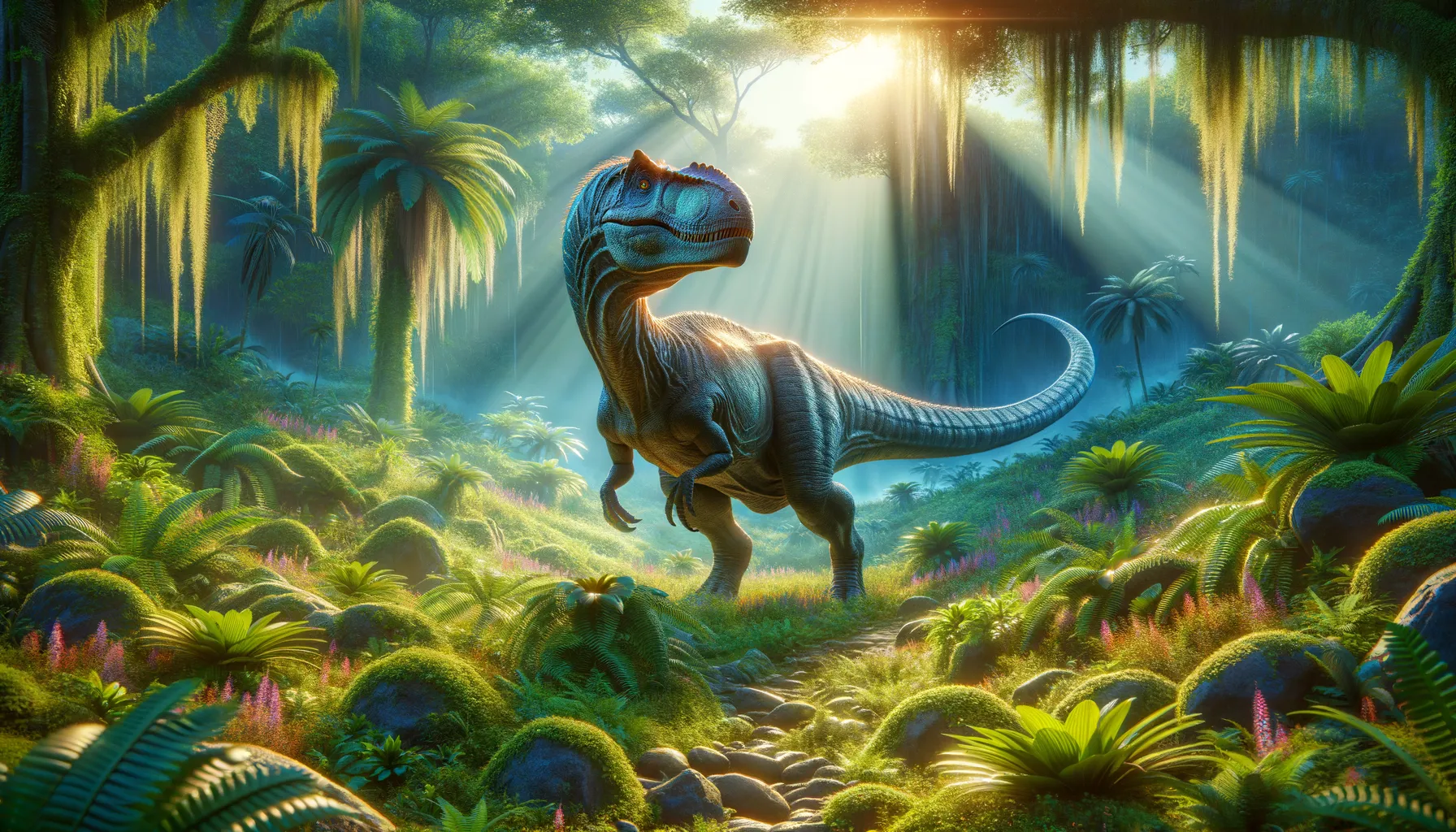
Rhodanosaurus
An ancient beast of the Cretaceous world.
Period
Cretaceous
Length
Up to 30 feet long.
Height
Around 10 feet tall.
Weight
Approximately 1.2 tons.
Rhodanosaurus was a fascinating dinosaur species known for its impressive size and distinct characteristics. This creature roamed the earth during the Cretaceous period, showcasing a magnificent blend of traits that captivated paleontologists upon its discovery. Its fossils have provided great insight into the diversity and adaptability of prehistoric life. The Rhodanosaurus, with its unique anatomical features, stands as a key subject in understanding the evolutionary history of dinosaurs.
Diet
Rhodanosaurus was herbivorous, primarily consuming low-lying vegetation. It likely fed on ferns and cycads, which were abundant during its time.
Hunting
As a herbivore, Rhodanosaurus did not hunt but foraged for food. It used its keen sense of smell to locate nutritious plants.
Environmental challenges
Rhodanosaurus faced environmental changes such as fluctuating climates and competition for resources. Periodic droughts and habitat changes required it to adapt its foraging strategies. Predation from carnivorous dinosaurs also posed a significant challenge.
Speed
Estimated to move at moderate speeds.
Lifespan
Roughly around 20 to 30 years.
First discovery
Discovered in the late 19th century.
Fun Facts
- Rhodanosaurus lived during the Late Cretaceous period, around 70 million years ago.
- This dinosaur was a herbivore, meaning it primarily ate plants.
- Fossils of Rhodanosaurus have mainly been found in what is now Europe.
- Rhodanosaurus is believed to have a long neck, useful for reaching high vegetation.
- It was relatively small compared to other dinosaurs, making it more agile.
- Rhodanosaurus belonged to the group of dinosaurs known as sauropods.
- The name 'Rhodanosaurus' means 'Rhone River lizard,' referencing the region where its fossils were discovered.
Growth and Development
Rhodanosaurus grew rapidly during its juvenile stages, with growth rates tapering off as it reached adulthood. Its development included changes in bone structure for enhanced mobility. Juveniles likely stayed in groups for protection.
Habitat
Rhodanosaurus inhabited forested areas with ample vegetation. It thrived in regions with a mix of open landscapes and dense forests. The availability of water sources influenced its habitat choices.
Interaction with other species
Rhodanosaurus coexisted with various herbivorous and carnivorous dinosaurs. It formed mixed herds with other herbivores for safety. Its sheer size offered some protection against predators.
Natural lifespan
In the wild, Rhodanosaurus lived for about 25 years.
Reproduction
Rhodanosaurus laid eggs in nests constructed from vegetation. Females may have guarded the nests to protect the eggs from predation. Hatchlings were precocial and able to move shortly after birth.
Social behaviour
Rhodanosaurus likely lived in small herds, which provided social interaction and protection. Communication may have included vocalizations and visual displays using its crest.
Fossil locations
Fossils of Rhodanosaurus have been primarily found in southern Europe. These sites offer a glimpse into the diverse ecosystems of the Cretaceous period. The initial discovery in the Rhône Valley helped establish its classification.
